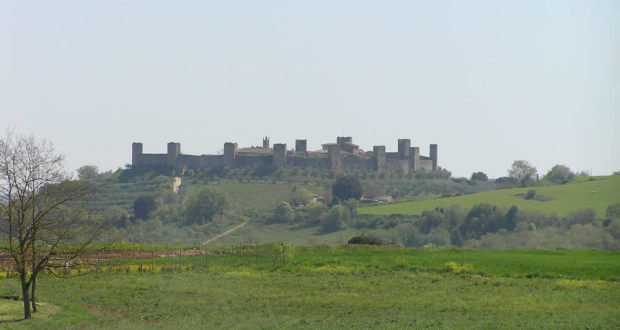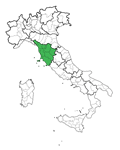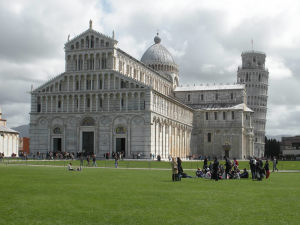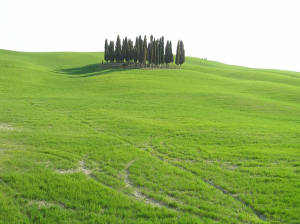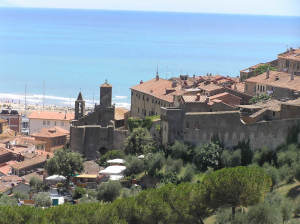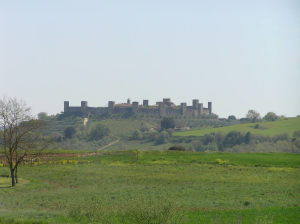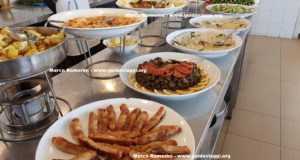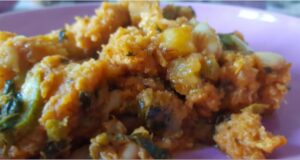Questo post è disponibile anche in: Italian French Portuguese (Portugal) Spanish
Tuscany is one of Italy’s north-central region, located along the coast of the Tyrrhenian Sea, which has a common border with Liguria in the north-west, Emilia Romagna to the north, the Marche and Umbria to the east, and Lazio to the south.
The region is characterized by a flat area crossed by the Arno river and its tributaries, where there are many major cities of the region, there lies the regional capital Florence, and then the cities of Prato, Pistoia, Lucca, Pisa and Livorno (Leghorn). This is the most developed and most densely populated area of the region, but most of Tuscany is not made of plains, which account for just over 8% of the total area. The hills are the key feature of the Tuscan landscape, they constitute more than 66% of the territory, while the mountains account for 25% of the surface.
The hills occupy the entire area south of the Arno creating an unique landscapes thanks to the clever combination of nature and man’s work. To the north on the border with Emilia Romagna are the Tosco-Emiliano Apennine mountains, where is Monte Prado (2,054 meters) which is the highest mountain of Tuscany, other major peaks are Monte Giovo (1,991 meters), Monte Rondinaio (1,964 meters), Alpe delle Tre Potenze (1,940 m), Monte Rotondo or Libro Aperto (1,937 meters).

View from Piazzale Michelangelo, Florence, Tuscany. Author and Copyright Marco Ramerini
To the northwest, near the coast of Versilia, rises the scenic Apuan Alps, the marble mountains, their name is due to their resemblance to the Alps, the highest peak is Mount Pisanino (1,946 meters).
In the central area of Tuscany are the mountains of Chianti, that do not exceed 900 meters in height, to the east it is the massif of Pratomagno (Croce di Pratomagno, 1,592 meters). To the south are the Colline Metallifere that are just over 1,000 meters, and the isolated Mount Amiata (1,738 meters), an ancient volcano.
The coasts of Tuscany stretch for about 330 km and are very diverse as is the rest of the region. The northern part of the coast, the one that comes from the border with Liguria to the town of Livorno is flat and sandy, south of Livorno the coast becomes high and rocky, but soon returns low and full of beaches until it reachs the Baratti promontory where it is again high and rocky until Piombino. The Gulf of Follonica again sees vast beaches and low coast, which with the approach of Punta Ala back to become high, alternating beaches and high rocky areas up to Castiglione della Pescaia, from here up to the Monti dell’Uccellina the coast returns low and sandy, the coast rises between the Monti dell’Uccellina and Talamone, and then get up again in the Argentario peninsula, which is all high and rocky.
In the Tyrrhenian Sea and the Ligurian Sea belong to Tuscany numerous islands, which form the Tuscan Archipelago, the largest of which is the island of Elba (223 km²), the others are the Giglio island (23.8 km² ), the island of Capraia (19,03 km²), the island of Montecristo (10.39 km²), the island of Pianosa (10.3 km²), the island of Giannutri (2.6 km²) and the island of Gorgona (2.25 km²), plus some smaller islets and rocks.

Crete Senesi, Siena, Tuscany. Author and Copyright Marco Ramerini.
Tuscany what to see: the tourist attractions
Tuscany is one of the Italian regions most frequented by international tourism, it contains within it many features of the Italian peninsula: There are art cities of world renown such as Florence, Lucca, Pisa, Siena, Arezzo, Pistoia, but also hundreds of small medieval towns and villages (Massa Marittima, San Gimignano, Volterra, Cortona, Pienza, Montepulciano, Monteriggioni, Pietrasanta, Chiusi, Cetona, Sovana, Pitigliano, Certaldo, Montalcino, San Miniato) that would make for themselves the tourist fortune of a nation.
Famous are the spas, some of which are world renowned as Montacatini Terme, Chianciano Terme and Saturnia. Etruscan and Roman archaeological sites (Roselle, Populonia, Vetulonia, Fiesole, Volterra, Cortona, Sovana, Chiusi, Ansedonia) are another reason to visit the region.
Tuscany has a great diversity of landscapes ranging from a coastline of sandy beaches like in Versilia, in the Etruscan Coast and in parts of the Maremma, but also a wild and rocky coast as but also a wild and rocky coast as in the Uccellina Mountains, in the Monte Argentario, in the promontory of Piombino, in the promontory of Punta Ala and in the islands of the archipelago. With famous seaside resorts like Viareggio, Forte dei Marmi, Donoratico, San Vincenzo, Castiglione della Pescaia, Talamone, Monte Argentario, Capalbio, the islands of Elba and Giglio.
Tuscany has a hilly landscape that varies from the bare and desolate hills of the Crete Senesi and the Val d’Orcia, to those covered with vineyards and olive groves of the Chianti hills, to the mountain valleys of the Mugello, Casentino and Garfagnana, and ancient marshlands now reclaimed as the Maremma. There are gentle mountains as the Apennines and sharp peaks similar to the Dolomites as the Apuan Alps.

Siena, Tuscany. Author and Copyright Marco Ramerini
Tuscany is the Italian region with the highest absolute forest area, 10% of the region is protected by a park or a nature reserve, in Tuscany there are 3 national parks (Arcipelago Toscano National Park, Foreste Casentinesi, Monte Falterona, Campigna National Park and Appennino Tosco-Emiliano National Park), three regional parks (Maremma Regional Park, Migliarino, San Rossore and Massaciuccoli Natural Park and the Regional Natural Park of the Apuan Alps), and countless nature reserves.
Very developed are the farm and food tourism sectors. The cuisine of Tuscany is one of the most characteristics and varied cuisines of the Italian scene, how can we forget the Minestra di Pane (Ribollita), Cacciucco Livornese, Bistecca alla Fiorentina (Florentine steak), Rostinciana, Trippa alla Fiorentina, Lampredotto, Pane Toscano (Tuscan Bread), sliced meats and salumi. The region produces famous wines such as Chianti Classico, Brunello di Montalcino, Vino Nobile di Montepulciano, Vernaccia di San Gimignano, Morellino di Scansano, Carmignano, Montecucco.
UNESCO has added 7 places in Tuscany in the list of World Heritage Sites:
- Historic Centre of Florence (1982).
- Piazza del Duomo, Pisa (1987).
- Historic Centre of San Gimignano (1990).
- Historic Centre of Siena (1995).
- Historic Centre of the City of Pienza (1996).
- Val d’Orcia (2004).
- Medici Villas and Gardens in Tuscany (2013).
While other 5 locations are slated to be included:
- Historic Centre of Lucca.
- Pelagos. The Sanctuary of Cetaceans.
- The marble quarries of Carrara.
- Volterra: The historic city and cultural landscape.
- Great Spas of Europe (Montecatini Terme).
- View from Piazzale Michelangelo, Florence, Tuscany. Author and Copyright Marco Ramerini
- Duomo, Pisa, Tuscany. Author and Copyright Nello et Nadia Lubrina.
- Siena, Tuscany. Author and Copyright Marco Ramerini
- Fortress, Volterra, Tuscany. Author and Copyright Marco Ramerini
- Countryside near San Quirico d’Orcia, Val d’Orcia, Siena, Tuscany. Author et Copyright Marco Ramerini
- Crete Senesi, Siena, Tuscany. Author and Copyright Marco Ramerini.
- The medieval town of Castiglione della Pescaia, Grosseto, Tuscany. Author and Copyright Marco Ramerini
- Monteriggioni, Siena, Tuscany. Author and Copyright Marco Ramerini
 Italyaround Ricette e sapori dell'Italia
Italyaround Ricette e sapori dell'Italia
